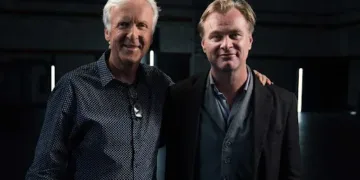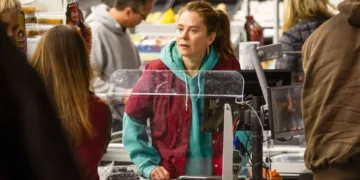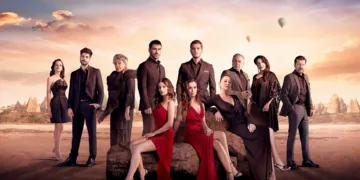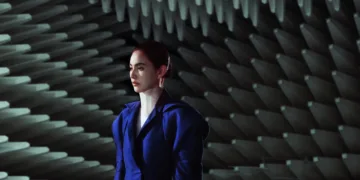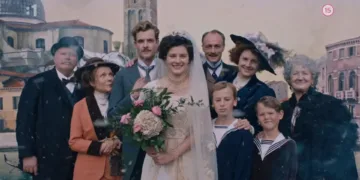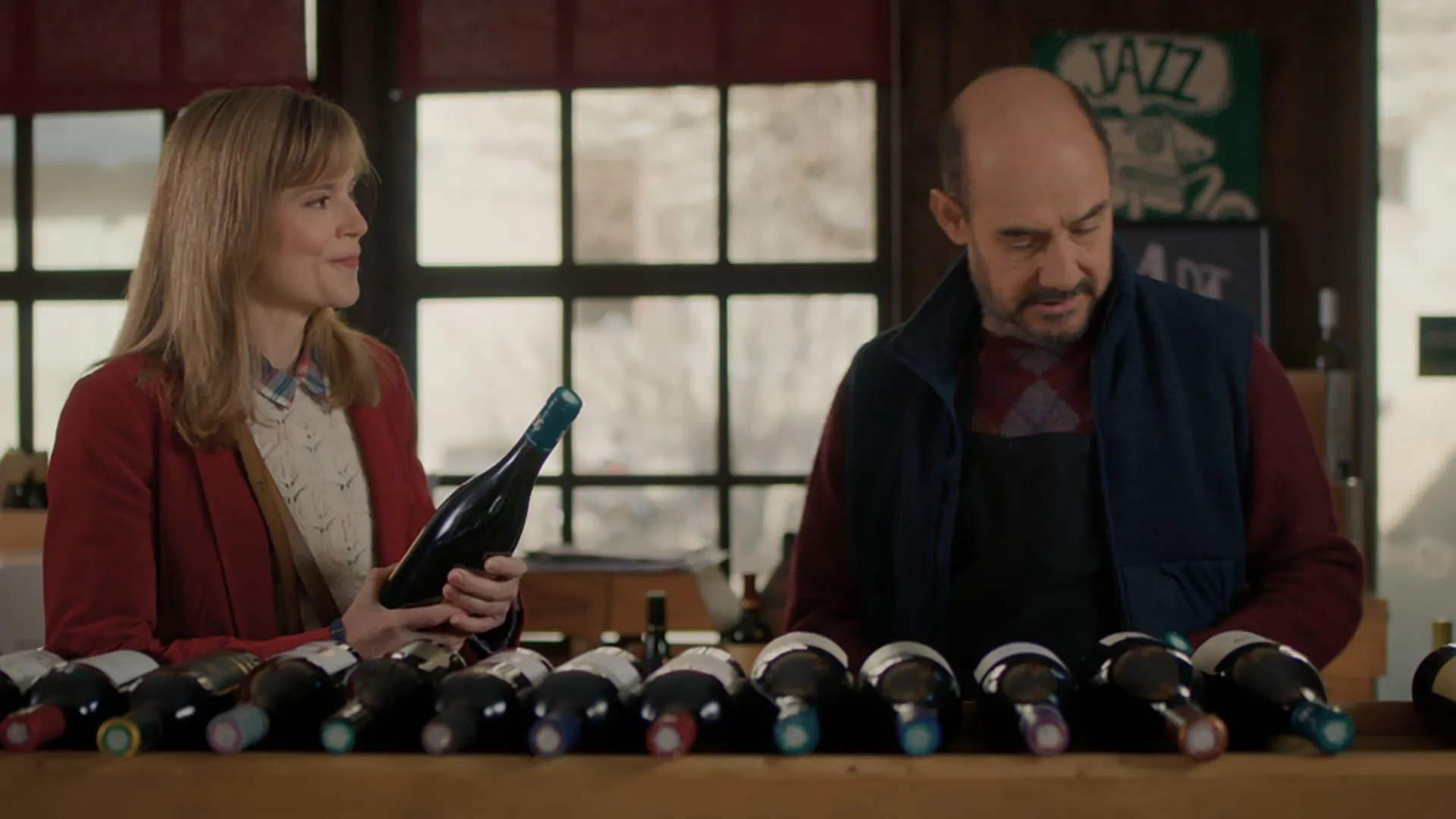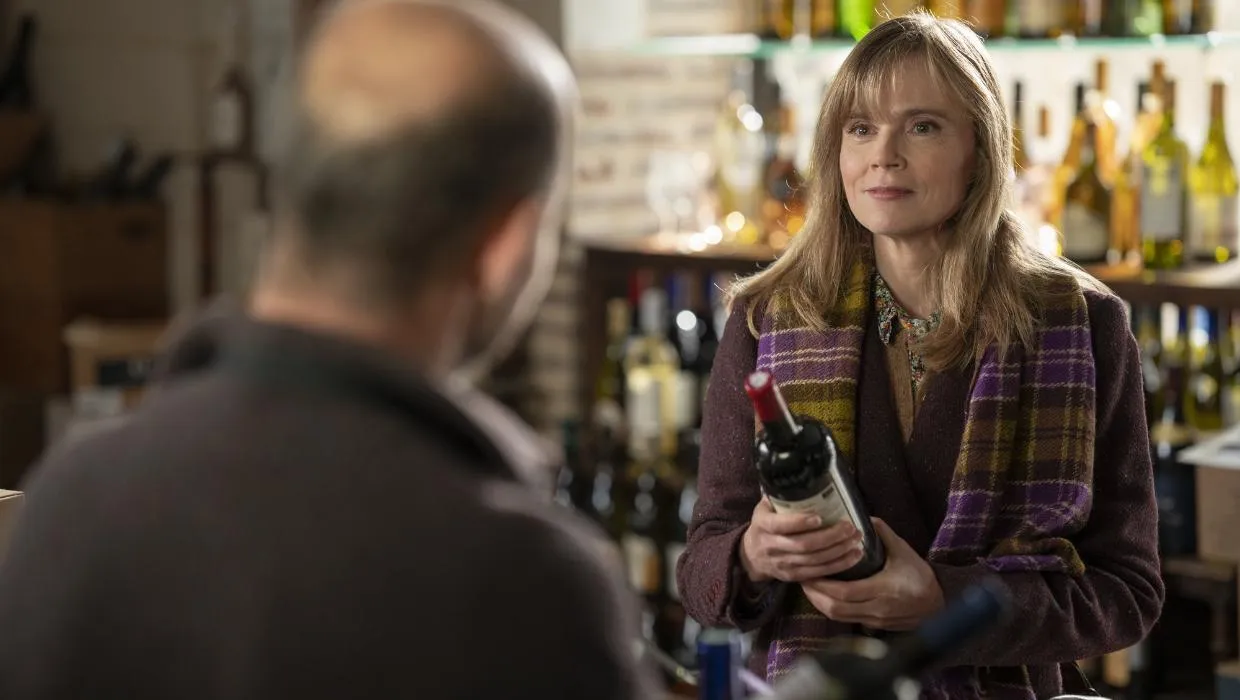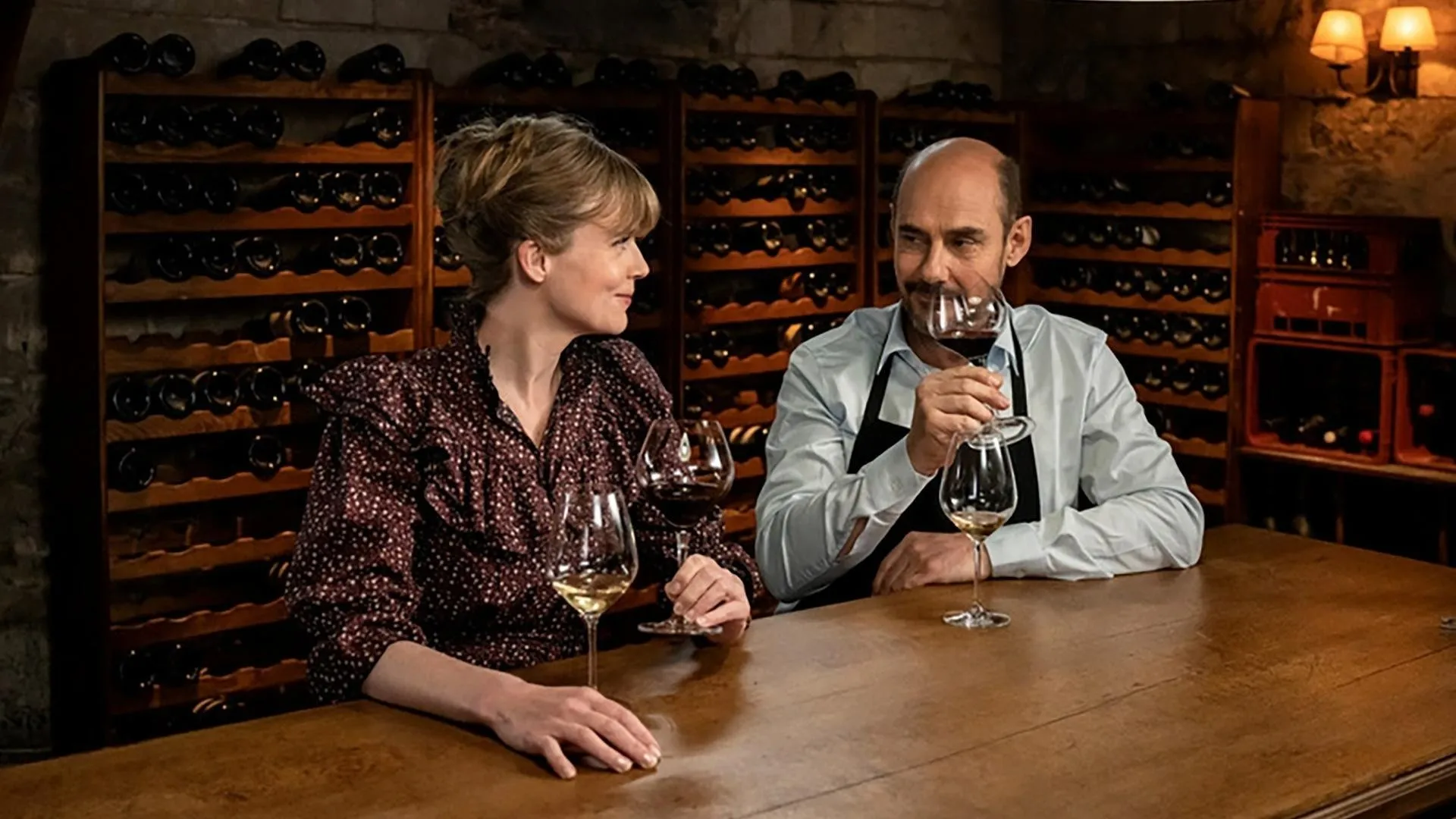Set in Troyes, a town that radiates old-world allure and subtle charm, the film opens with a rich introduction to its central storyline. The narrative pivots around the unexpected meeting of Hortense, a devoted midwife with a deep longing for motherhood, and Jacques, a wine dealer burdened by past sorrows and personal health challenges. In this setting of winding cobbled streets and timeworn architecture, the film creates a palpable sense of place that recalls both European period dramas and elements reminiscent of certain South Asian cinematic traditions.
Originating from a stage work penned by Ivan Calbérac, the film carries an air of theatrical precision, manifest in its carefully constructed scenes and measured dialogue. Hortense and Jacques come together amidst a succession of intimate vinous encounters and communal meals, which stir emotional reflections and subtle shifts in their inner lives.
The narrative weaves visual symbolism with a rich musical score and precise editing, creating moments that evoke the crafted storytelling techniques often associated with acclaimed parallel cinema in Bollywood. This film presents a warm yet bittersweet canvas—a setting where humor, cultural authenticity, and personal redemption reveal layers of meaning that invite international viewers to appreciate its distinct portrayal of modern life and timeless human values.
Striking Encounters: Unraveling the Narrative’s Pulse
The film opens with a fortuitous meeting in a quaint wine shop in Troyes, where Hortense, dedicated to her work as a midwife, enters the humble space and crosses paths with Jacques, whose life revolves around his family-run wine store.
Hortense’s daily routine, marked by her commitment to community care and personal aspirations for motherhood, contrasts with Jacques’s quieter existence—one marred by a serious health scare and memories best left unspoken. This meeting sets in motion a series of events that weave together lighthearted charm with subtle emotional complexity.
The narrative advances as the two characters share unexpected moments over carefully orchestrated wine tasting sessions. These gatherings serve as a stage for their evolving connection, inviting the audience to observe how seemingly ordinary interactions reveal hidden layers of longing and regret.
Hortense’s practical kindness meets Jacques’s guarded introspection, producing scenes that hint at the balance between duty and desire. Here, the film captures a cinematic approach reminiscent of modern parallel narratives seen in certain strands of Bollywood, where detailed human stories are told through everyday moments and long-held traditions.
A sequence of turning points punctuates the film’s course, beginning with the playful spark of their initial encounter and evolving into more profound revelations of personal histories that have both shaped and restrained the protagonists. Secondary characters, introduced with humor and subtle irony, provide moments of levity that underscore the main storyline’s shifts in mood.
The deliberate pacing of the narrative allows playful beginnings to mature into a reflective examination of personal burdens. This structural choice deepens the viewer’s engagement, as the anticipated romance is postponed, allowing character development and quiet introspection to shape the unfolding tale.
In Focus: Hearts Unveiled Amid Vinous Shadows
Hortense emerges as a figure defined by care and quiet resolve. As a midwife devoted to her community, she extends compassion to those less fortunate, a role that mirrors her internal longing for personal fulfillment and motherhood.
Her character presents a mix of gentle kindness paired with a stubborn streak, evident in the small, thoughtful gestures and occasional flashes of determination. Moments in the film capture her soft approach to life, yet a subtle solitude hints at a deeper wish for connection that extends beyond her day-to-day responsibilities.
Jacques, by contrast, stands as a man of dualities. His work at the wine store reveals his expert knowledge and appreciation for fine vintages. However, this professional pride shares space with personal vulnerabilities. Following a serious health warning, his guarded nature and hints of a troubled past surface, inviting viewers to sense the pain he carefully conceals behind a practiced smile. The controlled environment of his tasting sessions becomes the stage for quiet revelations; his measured participation in these events signals small shifts in his demeanor as he finds ways to express a softening heart.
Supporting characters add further texture to the narrative. The young intern, Steve, makes noticeable progress from uncertainty to a budding understanding of the subtleties of wine, a subplot that adds an element of growth and hope. The presence of a bookstore owner introduces touches of humor and tension, acting as a foil to the more introspective leads. Hortense’s interactions with her devout mother reveal additional layers—unspoken expectations and sacrifices that shape her actions and underscore the challenges she faces in reconciling personal desires with societal duties.
Each character is crafted with careful attention, their personal struggles and quiet victories echoing themes found in select strands of Indian parallel cinema, where narrative depth is conveyed through everyday moments and authentic portrayals.
Visual Poetry: Troyes Framed in Time
The film paints Troyes as a living character through its artful use of cinematography. The town’s medieval charm, with its winding cobblestone alleys and lush vineyards, is captured using wide-screen framing that emphasizes both its grandeur and intimate corners.
The camera lingers on quiet street scenes and sunlit vineyards, evoking a sense of nostalgia that recalls the careful visual storytelling found in select works of Indian parallel cinema. Here, the town is not merely a backdrop; its cultural and historical essence is interwoven with the narrative, enriching the film’s romantic mood.
Technicians have applied subtle shifts in the color palette to mirror the emotional landscape of the story. Warm hues dominate outdoor settings, lending a sun-drenched quality to Troyes, while cooler tones are reserved for the more confined interiors of the wine shop.
This thoughtful division enhances the contrast between the open, life-affirming vibrance of the town and the introspective, sometimes somber mood felt indoors. In both settings, the careful layering of shadows and light supports the unfolding dialogue between humor and heartfelt reflection.
Attention to detail is visible in every frame, from the meticulously arranged decor inside the wine shop to the period-accurate props that speak of a deep-seated pride in French cultural heritage. These design choices bring authenticity to the film’s visual narrative and remind one of the precise art direction frequently celebrated in Bollywood’s attention to detail.
The musical score, featuring hints of classic tunes, syncs perfectly with the visual cues, reinforcing pivotal moments through subtle sound cues. The interplay of natural daylight and artfully staged lighting not only distinguishes scene moods but also supports the storytelling techniques, ensuring that every visual element contributes to the emotional momentum without overpowering the characters’ nuanced journeys.
Wine: A Mirror of Desire and Restraint
Wine appears as a central symbol, reflecting both the sweetness of indulgence and the discipline of self-control. Jacques’s expertise in selecting exquisite vintages stands in sharp contrast to his personal difficulties. In moments when he pours a glass, the act serves as a reminder of his inner struggle—his deep appreciation for the liquid’s richness set beside the limits imposed by his own health and past sorrows. The film uses wine as a mirror for the characters’ inner conflicts, where each sip hints at a longing for escape and a need to confront long-held burdens.
Both Hortense and Jacques are shown as individuals living in isolation, each carrying an unspoken weight that prevents them from fully connecting with the world around them. Hortense’s commitment to her community and her work as a midwife hide her own personal yearnings and silent grief.
As the narrative unfolds, their shared sense of solitude gradually becomes a common ground where hope is rediscovered. Their personal paths cross at moments marked by a quiet release of their emotional baggage, symbolized by the mingling of their chosen wines at intimate gatherings.
The film’s portrayal of modern relationships blends traditional responsibilities with a search for personal truth. Hortense’s life, defined by her duties toward family and community, contrasts with the inner life of Jacques—a man bound by old regrets yet seeking renewal.
The tension between everyday obligations and a desire for change reflects trends seen in certain Indian parallel cinema productions, where everyday rituals are imbued with deeper meaning. Moments of laughter arise even as hidden pains surface, creating a layered narrative that uses subtle humor to soften the impact of life’s hardships.
From Stage to Screen: A Director’s Artful Craft
Ivan Calbérac’s theatrical background surfaces throughout the film. His experience in live performance clearly influences the dialogue, stage blocking, and character interactions. Techniques are in place that discreetly hide the work’s origins as a play.
For instance, long takes and deliberate framing give the viewer a sense of being part of a live performance while the camera’s movement and carefully choreographed scenes allow the narrative to flow in a manner suited to the cinematic medium.
The director interlaces moments of light romantic humor with scenes that address weighty personal themes such as loss, emotional restraint, and the burden of past regrets. The script is constructed so that playful banter transitions into quieter, more thoughtful exchanges.
A scene during a wine tasting, for example, subtly shifts from a convivial atmosphere to one where underlying pain and hesitation are revealed. This technique of layering humor with introspection creates an engaging mix that speaks to audiences familiar with both mainstream Bollywood storytelling and the reflective style seen in parts of Indian parallel cinema.
The film moves forward at a deliberate pace, starting with upbeat, inviting sequences that gradually unfold into more complex character studies. Dialogue is employed with precision, gradually revealing previously hidden backstories and unspoken vulnerabilities. Careful editing, combined with thoughtful sound design and a period-inspired musical score, supports these revelations and guides the viewer through the evolving emotional landscapes of the characters.
Set design and color choices play a significant role. The decor in the wine shop and the use of natural and ambient light bring a palpable authenticity to each scene, reminding viewers of the director’s intent to blend theatrical precision with the sensory depth of cinema. The collaborative work of visual storytelling and auditory cues underscores Calbérac’s creative vision and invites a personal connection with each character’s inner struggles.
Full Credits
Director: Ivan Calbérac
Writers: Ivan Calbérac
Producers and Executive Producers: Eric Altmayer, Nicolas Altmayer, Isabelle Grellat, Genevieve Lemal
Cast: Isabelle Carré, Bernard Campan, Mounir Amamra, Eric Viellard, Olivier Claverie, Geneviève Mnich, Rébecca Finet, Séphora Pondi, Sébastien Delpy, Pierre Benezit, Jeanne Arènes, Michaël Perez, Boris Gillot, Raphaël Thiéry, Mathieu Lourdel, Bass Dhem, Jacqueline Galas, Jean-Toussaint Bernard, Éric Denize, Danuta Zarazik, Clarisse Normand, Axel Ducret, Thiennot Dominique, Kassoum Hamani Himou, Saïdi Jemma, Marie-Céline Tuvache, Céline Esperin, Sophie de Fürst, Sébastien Buron, Benjamin Brenière, Emilie Yili Kang, Elisabeth Ventura, Romain Vignes, Virginie Hombel, Isabelle Fournier, Jules Kolodziej, Constantin Vidal, Théo Fresnée, Arthur Jugnot
Director of Photography (Cinematographer): Philippe Guilbert
Editors: Véronique Parnet
Composer: Laurent Aknin
The Review
The Tasting
The Tasting is a subtle yet refined exploration of personal longing and human connection. It translates its theatrical roots into a cinematic canvas with clear, intentional visuals and measured storytelling. The film charms with its delicate interplay of humor and emotional depth, even if its deliberate pace may leave some viewers wanting extra energy.
PROS
- Intricate fusion of theatrical roots with cinematic expression
- Visually captivating use of Troyes as a living character
- Thoughtful character development and subtle emotional nuances
- Engaging blend of humor with reflective dramatic moments
- Rich symbolism and cultural authenticity
CONS
- Deliberate pacing may feel slow for some viewers
- Some narrative shifts could seem understated
- Limited exploration of secondary characters
- Certain tonal transitions might not resonate with all
- Occasional over-reliance on symbolic imagery














